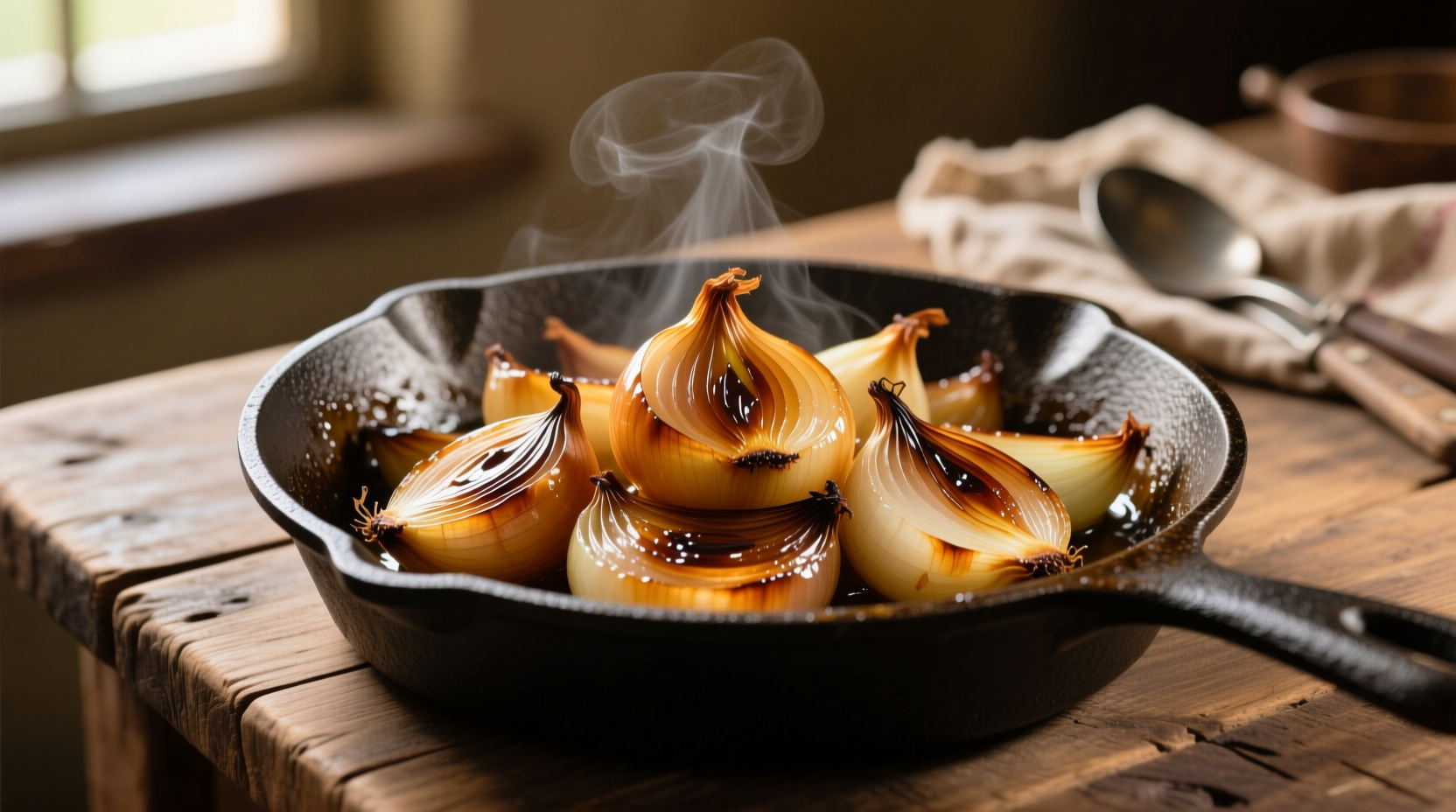If you're searching for "onion nooty," you're likely referring to the rich, nutty flavor profile that develops when onions undergo proper caramelization. This isn't a standard culinary term but describes the complex transformation onions undergo when cooked slowly, developing deep umami notes and nutty characteristics that elevate countless dishes. Understanding this process unlocks professional-level flavor development in your cooking.
The Science Behind Onion Flavor Transformation
When onions hit your pan, a remarkable chemical transformation begins. Raw onions contain natural sugars and sulfur compounds that, when exposed to heat, undergo two critical processes: the Maillard reaction and caramelization. These aren't just "browning"—they're sophisticated chemical reactions that create entirely new flavor compounds.
Professional chefs like Antonio Rodriguez explain: "The magic happens between 285-320°F (140-160°C). Below this range, you're just softening onions. Above it, you risk burning. The sweet spot creates that elusive nutty, almost meaty flavor we call 'onion nooty'—though in culinary circles, we'd describe it as properly caramelized onions with developed fond."
Timeline of Flavor Development: From Raw to Nutty
Understanding the precise progression helps you achieve perfect results every time. Here's what happens as onions cook:
| Time | Temperature | Chemical Process | Flavor Profile |
|---|---|---|---|
| 0-5 minutes | 212°F (100°C) | Moisture release | Sharp, pungent, raw |
| 5-15 minutes | 230-265°F (110-130°C) | Sulfur compounds breaking down | Milder, sweeter, less pungent |
| 15-30 minutes | 285-300°F (140-150°C) | Maillard reaction begins | Nutty, savory, complex umami |
| 30-45+ minutes | 300-320°F (150-160°C) | Full caramelization | Deeply nutty, sweet, rich, almost meaty |
Achieving Perfect Nutty Onions: Step-by-Step Guide
Professional results require precise technique. Follow these steps for consistently nutty, flavorful onions:
1. Onion Selection Matters
Yellow onions contain the ideal sugar-to-water ratio for caramelization (4-5% sugar content according to USDA FoodData Central). Avoid sweet onions like Vidalias for this purpose—they contain more water, which prolongs cooking time and can lead to steaming rather than browning.
2. Proper Cutting Technique
Cut onions with the grain (parallel to root-stem axis) rather than across it. This preserves more cell structure, preventing mushiness while allowing even browning. Aim for uniform 1/8-inch slices—too thick and they won't caramelize evenly; too thin and they'll burn.

3. The Two-Stage Cooking Method
"Most home cooks make the mistake of using too high heat," explains Rodriguez. "True nutty flavor development requires patience and temperature control:"
- Stage 1 (Moisture Removal): Cook over medium heat with a pinch of salt until onions release their water and become translucent (about 10 minutes). Don't stir constantly—let them sit to develop fond.
- Stage 2 (Flavor Development): Reduce heat to medium-low. Add 1 tablespoon water, broth, or wine every 5-7 minutes to deglaze the pan and incorporate fond. Continue for 25-35 minutes until deep golden brown.
When Nutty Onions Shine: Culinary Applications
That elusive "onion nooty" flavor works beautifully in specific applications but can be overwhelming in others. Understanding these context boundaries ensures perfect results:
Ideal Applications (Where Nutty Onions Elevate Dishes)
- French onion soup (requires 45+ minutes of slow caramelization)
- Meatloaf and burger blends (adds umami depth)
- Onion jam for cheese boards
- Base for rich gravies and sauces
- Quiches and savory tarts
Applications to Avoid
- Fresh salsas or salads (use raw or barely cooked onions)
- Dishes requiring bright onion flavor (like Bloody Mary mix)
- Quick stir-fries where texture matters more than deep flavor
Troubleshooting Common Onion Cooking Issues
Even experienced cooks encounter problems. Here's how to fix them:
Burnt Instead of Browned
Cause: Heat too high or uneven pan temperature
Solution: Use a heavy-bottomed pan (cast iron or stainless steel) and maintain medium-low heat. If burning occurs, start over—burnt fond can't be salvaged.
Too Bitter or Acrid
Cause: Incomplete caramelization or burning
Solution: Add 1-2 teaspoons of acid (balsamic vinegar or lemon juice) to balance flavors. For future batches, lower heat and extend cooking time.
Still Pungent After Cooking
Cause: Insufficient cooking time to break down sulfur compounds
Solution: Continue cooking with occasional deglazing until onions reach deep golden brown color.
Advanced Techniques for Flavor Enhancement
Take your nutty onions to the next level with these professional methods:
- Fat selection: Use a combination of butter (for flavor) and oil (for higher smoke point). Clarified butter works exceptionally well.
- Acid addition: A splash of sherry vinegar in the final minutes enhances complexity without making onions sour.
- Umami boosters: Add a small piece of kombu seaweed during cooking (remove before serving) for natural glutamates.
- Storage: Properly caramelized onions keep for 5 days refrigerated or 3 months frozen. Freeze in ice cube trays for portioned use.
Common Questions About Onion Flavor Development
Understanding these nuances separates amateur from professional results:











 浙公网安备
33010002000092号
浙公网安备
33010002000092号 浙B2-20120091-4
浙B2-20120091-4